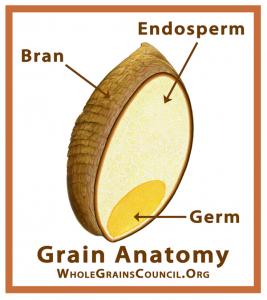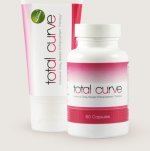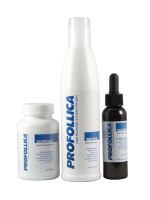Whole Grains. Real Food Diet
Whole grains or refined grains. Does it matter to you? Yes it does - in a very big way.
Generally referred to as cereals, both are seeds of grasses grown for food. They come in many shapes and sizes and are considered to be excellent sources of complex carbohydrates, vitamins and minerals.
Examples include: Corn, millet, oats, rice, sorghum and wheat. Others, although grouped together with cereals, such as amaranth, buckwheat and quinoa are not really true cereal grains as they do not belong to the same Poaceae botanical family of the true grasses.
However, they are regarded as "pseudo-grains" because their use, preparation and nutritional profiles bear a remarkable similarity to those of the true grasses.
The Three Types of Grains
|
1) Whole grains. Unrefined grains that contain all the naturally occurring nutrients and essential parts of the entire grain seed:
|
 |
2) Refined grains. Processed grains that have had both the germ and the bran removed to give them a supposedly "smoother texture" and to prolong their shelf life.
The refining process removes up to 80% of a grain’s nutrients and fiber - ouch! Examples include white rice and white flour. White bread, desserts and pastries are some the products made with refined grains.
3) Enriched grains. Some of the nutrients, but not the lost fiber, removed during processing are added back in. They may also be fortified with nutrients that do not naturally occur in the grains such as iron and folic acid.
Which of the Grains is Best?
Very quick answer: The whole grains. Why? Well, all the original nutrients - including the fiber, remain intact. This is what you get:
- The fiber and vitamins rich bran.
- The starch rich endosperm.
- The germ that's abundant in minerals, vitamin E, B vitamins, protein, and very healthy unsaturated oils.
Bottom line: You get the best deal nutrition, texture and flavor wise. Just the way nature intended.
Health Benefits of Whole Grains
Those who eat them as a part of a healthy balanced diet experience many benefits. It’s the whole package of the grain, all the nutrients intact and working together, that confer the following health benefits.
- Reduced risk of inflammatory diseases.
- Reduced risk of type 2 diabetes.
- Reduced risk of heart disease.
- Satiety is promoted, leading to better weight management.
- Bowel movement regularity and a healthy digestive system.
- Reduced risk of asthma.
- Enhanced healthier blood pressure levels.
- Reduced risk of developing certain kinds of cancers such as those of the stomach, colon and prostate.
Helpful Tips to Increase Consumption
- Substitution: This is one of the easiest ways to ensure you consume more whole grains than refined grain products. You could substitute whole wheat bread for white bread and brown rice for white rice.
- Augmentation: Use them in mixed dishes. Add them to soups and casseroles. Stews thickened with wholemeal flour, brown rice or wheat bran are an excellent way to pump up your meals with beneficial nutrients.
- Use alternative flours: In recipes that are flour based, use amaranth, rye, whole wheat or oat flour for up to half (or more if you can) the flour you use to make waffles, cookies, biscuits, pancakes or muffins.
The above tips should more than help you increase your consumption of whole grains. There are many other ways you can integrate these healthy grains into your diet. The only limit is your imagination.
Read in Your Language
Sign up for our Email newsletter


*** Comments
Have your say about what you just read! Leave me a comment in the box below.